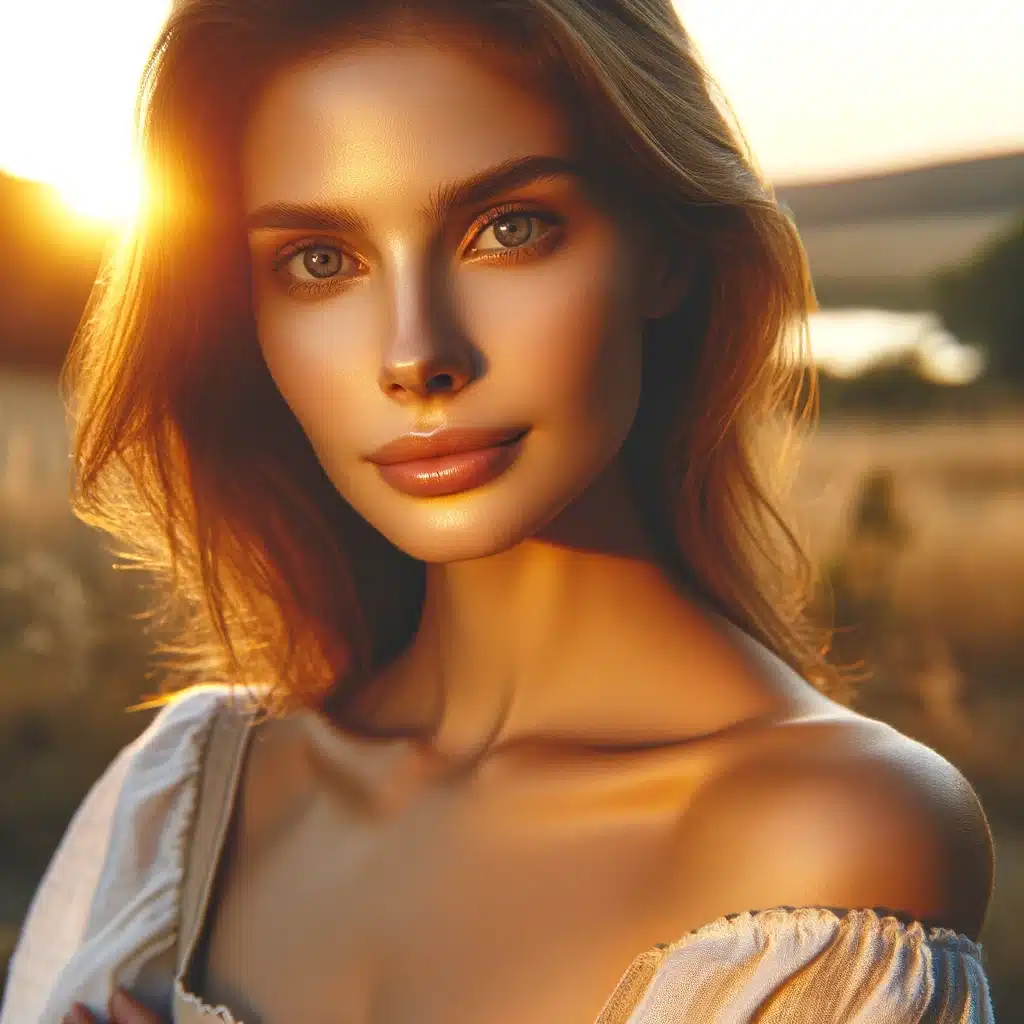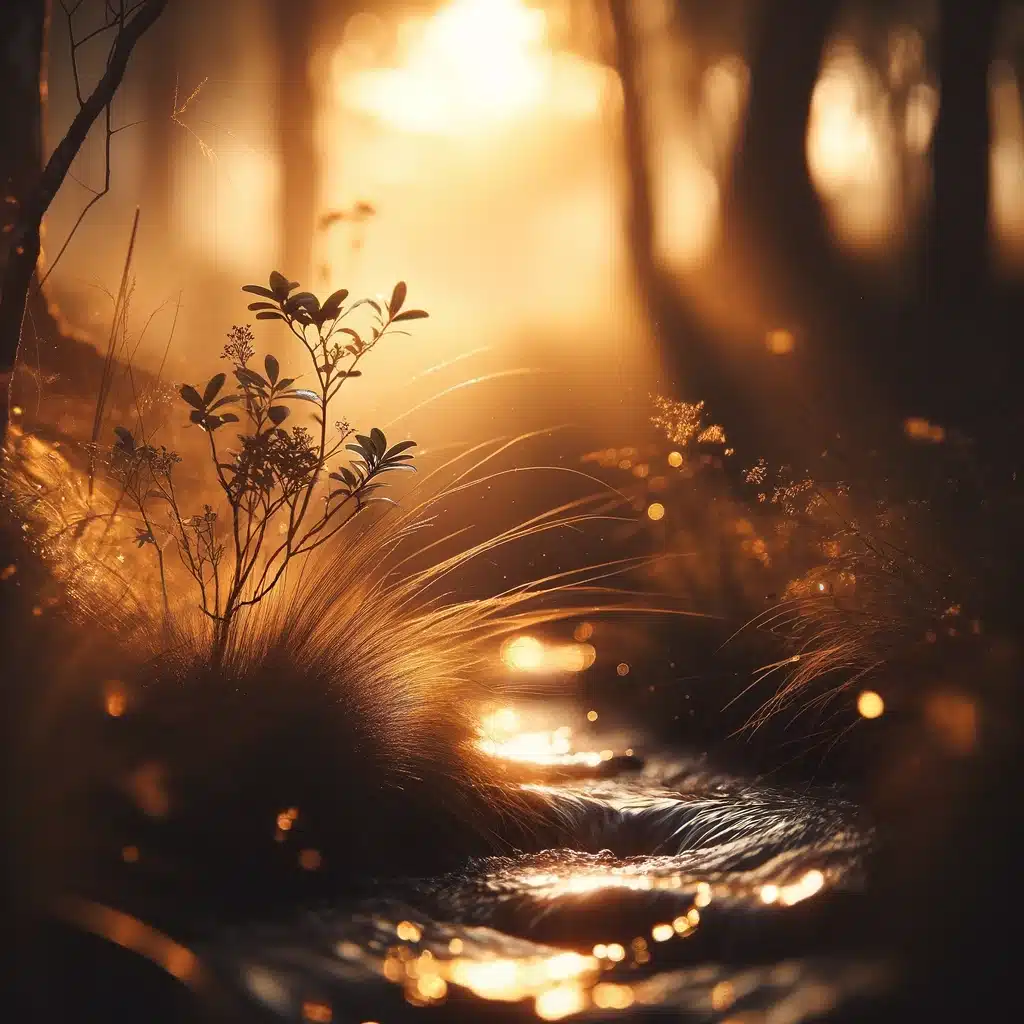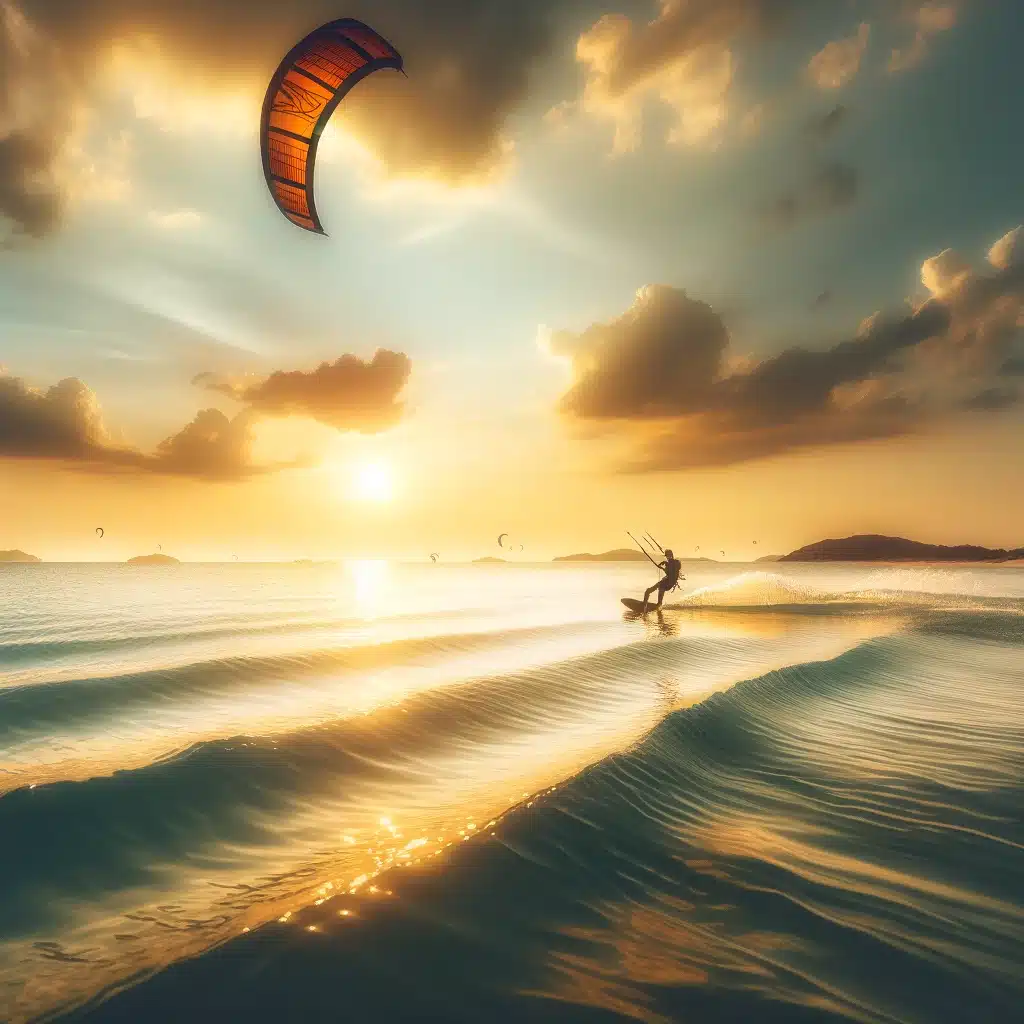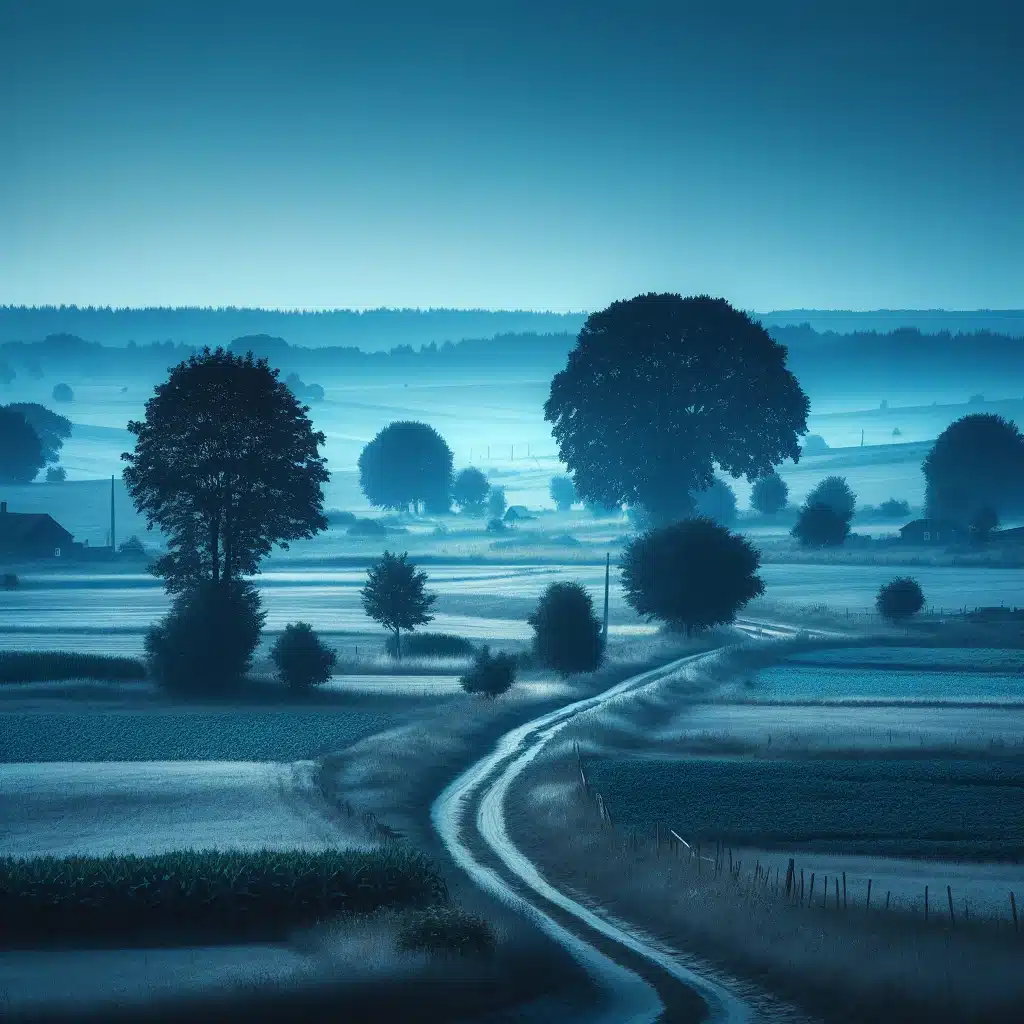Imagine stepping into a world where every moment is a canvas painted with the most magical light. This is what golden hour photography offers – a brief, enchanting time when the sun casts a golden spell over everything it touches. In the bustling streets of New York or the serene landscapes beyond, this time of day transforms ordinary scenes into extraordinary masterpieces. Golden hour, with its soft, warm light, invites photographers to capture the world in a way that’s both stunningly beautiful and deeply emotive. It’s not just about the light; it’s about the mood, the feeling, and the unique storytelling that comes alive during these golden moments. Whether you’re a seasoned photographer or just starting out, understanding and mastering golden hour photography can add a magical touch to your visual narratives, creating images that resonate with beauty, warmth, and an almost dreamlike quality. Let’s embark on a journey to uncover the secrets of this golden hour and how you can harness its power to elevate your photography.

What is Golden Hour Photography?
Golden hour photography refers to the magical time just after sunrise or just before sunset when the sun is low in the sky. This time is coveted by photographers for its soft, warm, and diffused light, which creates a golden hue. It’s an ideal time for photography due to the softer shadows and the warm color temperature of the light, which adds a dreamy, ethereal feel to the photos. The light during golden hour is much more flattering and less harsh than the midday sun, making it perfect for capturing a wide range of subjects, from landscapes and cityscapes to portraits. The golden hour’s unique lighting conditions offer endless creative possibilities, allowing photographers to experiment with light and shadow, texture, and color. It’s a time when the world seems to pause and glow, creating unforgettable moments and beautiful imagery.

The Art of Capturing Golden Hour
Mastering golden hour photography involves more than just being at the right place at the right time. It requires careful planning and an understanding of how to use this unique light to your advantage. Here’s how you can make the most out of golden hour:
- Planning and Timing: Golden hour’s timing varies depending on your location and the time of year. Use apps or online tools to determine the exact times for sunrise and sunset in your area. Plan to arrive at your location early, as the light changes quickly during this time.
- Camera Settings: To capture the golden light effectively, you may need to adjust your camera settings. Start with a lower ISO to reduce noise. Your aperture will depend on the depth of field you desire – a wider aperture (lower f-number) for portraits, and a smaller aperture (higher f-number) for landscapes. Shutter speed will vary based on your subject and the effect you want to achieve. Always shoot in RAW format for greater flexibility in post-processing.
- Composition and Perspective: Golden hour light can dramatically change the look and feel of a scene. Experiment with different compositions and perspectives to capture the long shadows and the warm glow. Silhouettes can be particularly striking during golden hour, offering a dramatic contrast against the glowing sky.
- Working with the Light: The direction of the light is crucial. Front-lighting can illuminate your subject evenly, side-lighting can enhance textures and shapes, and back-lighting can create a halo effect or silhouette. Be mindful of how the light interacts with your subject and the environment.
- Experimentation: Golden hour is the perfect time to experiment with your photography. Play with shadows, use lens flare creatively, and don’t be afraid to try different techniques like HDR or exposure bracketing.

By understanding these aspects and being open to experimentation, you can capture stunning photographs that truly embody the magic of the golden hour.
Challenges and Solutions in Golden Hour Photography
Golden hour, while enchanting, comes with its own set of challenges. The key to overcoming these obstacles lies in understanding the light and adapting your techniques accordingly.

- Balancing Light and Shadows: The contrast between bright and dark areas can be striking during golden hour. Use spot metering to expose for the highlights and prevent them from being washed out. Consider using HDR (High Dynamic Range) techniques or bracketing exposures to capture more details in both shadows and highlights.
- Managing Dynamic Range and Exposure: The dynamic range during golden hour can be quite wide. To handle this, you might need to adjust your camera’s exposure compensation to avoid losing detail in bright skies or dark foregrounds. Graduated ND (Neutral Density) filters can also be helpful to balance the exposure between the sky and the land.
- Dealing with Flare and Harsh Light: Lens flare is common when shooting towards the sun. While sometimes desirable for artistic effect, it can also be distracting. Shield your lens with your hand or use a lens hood to minimize flare. If the light is too harsh, try positioning your subject in a way that the light is more diffused or wait for the light to soften as the sun moves.
- Capturing Movement: Golden hour often presents a calm, serene atmosphere. To capture movement, like flowing water or rustling leaves, use a slower shutter speed. This can add a dynamic element to your photos, contrasting the stillness of the golden light.
- White Balance Adjustments: Auto white balance might not always accurately capture the warm tones of golden hour. Experiment with your camera’s white balance settings, or adjust it during post-processing for the desired warmth.

By understanding and adapting to these challenges, you can fully leverage the golden hour’s potential, transforming its limitations into creative opportunities for stunning photography.
Post-Processing Golden Hour Photos
Post-processing is a vital step in golden hour photography, allowing you to enhance the natural beauty of your shots and correct any issues. Here are some tips for editing your golden hour images:
- Adjusting White Balance: Golden hour photos often have a warm tone. During editing, you can adjust the white balance to enhance or slightly tone down the warmth, depending on your artistic vision.
- Enhancing Colors and Contrast: Golden hour provides rich, warm colors. In post-processing, gently boost the saturation and vibrance to make these colors pop. Be cautious not to overdo it, as it can make the photo look unnatural. Adjusting contrast can also help in defining details and adding depth to the image.
- Working with Shadows and Highlights: Use the shadows and highlights sliders to balance the exposure in your image. Bring out details in the shadows while ensuring the highlights aren’t blown out, maintaining a natural look.
- Sharpening and Clarity: Adding a bit of sharpening and clarity can bring out the textures and details in your golden hour photos. However, it’s important to avoid over-sharpening, which can create unwanted noise and artifacts.
- HDR and Exposure Blending: If you’ve taken multiple exposures of the same scene, consider blending them to create an HDR image. This technique is particularly useful for scenes with a high dynamic range, ensuring both the highlights and shadows are well-exposed.
- Crop and Composition Adjustments: Sometimes, a slight crop or adjustment in the composition during post-processing can make a big difference in the impact of the photo.

Remember, the goal of post-processing is to enhance the natural beauty of your golden hour photos, not to completely alter them. Subtle adjustments can go a long way in creating a stunning and impactful image.
Golden Hour vs. Blue Hour Photography
Golden hour and blue hour are both cherished by photographers for their unique lighting, but they offer distinct atmospheres and challenges.

- Golden Hour Characteristics: Characterized by its warm, soft, and golden light, golden hour occurs shortly after sunrise and before sunset. It creates long shadows and a magical, warm glow, perfect for portraits, landscapes, and street photography. The light during this time is flattering, enhances colors, and adds a dreamlike quality to photos.
- Blue Hour Qualities: Blue hour occurs just before sunrise and just after sunset, offering a cooler, bluer light. This light is softer and more even than golden hour, ideal for capturing the blue hues in the sky and city lights in urban settings. It’s a favorite for nightscapes, cityscapes, and for capturing the transition from day to night.
- Contrasting Techniques: During golden hour, photographers often chase the warm tones and soft shadows. In contrast, blue hour photography requires capturing the balance between the fading natural light and artificial lights, often requiring different settings, such as longer exposures.
- Emotional Impact: Golden hour evokes warmth, optimism, and tranquility, while blue hour brings a sense of calm, mystery, and serenity.

Understanding the differences between these two times of day can greatly enhance a photographer’s ability to capture the mood and essence of their surroundings. Each offers unique opportunities for creative expression and stunning photography.
The Significance of Golden Hour in Various Photography Genres
Golden hour’s unique lighting enhances various photography genres in different ways:
- Portraits: The soft, warm light of golden hour is ideal for portrait photography. It creates a flattering glow on the skin, reduces harsh shadows, and adds a dreamy quality to the background. The golden light can also highlight hair and features, adding depth and dimension to portraits.
- Landscapes: For landscape photographers, golden hour provides a dramatic and warm light that enhances natural colors, creates long and interesting shadows, and adds a magical quality to scenery. It’s perfect for capturing the beauty and tranquility of nature.
- Street Photography: In street photography, golden hour can add a cinematic feel. The play of light and shadows, along with the warm tones, can create moody, intriguing images that tell stories of everyday life.
- Architecture and Cityscapes: The golden hour light can bring out the textures and details in buildings, and the warm tones contrast beautifully with the sky, making it a great time for photographing cityscapes and architectural details.

Each genre benefits uniquely from the golden hour’s light, offering photographers the opportunity to explore and capture the world in a new and enchanting light.
Historical Perspective of Golden Hour in Photography
The concept of the golden hour in photography has deep roots in the long-standing tradition of the golden hour in painting. It’s a phenomenon that has bridged the gap between classic and contemporary artistry.
In the modern photography scene, one notable master of the golden hour technique is KangHee Kim. Her work exemplifies the artistry and skill that go into capturing the perfect shot during this magical hour. Kim’s mastery is just one shining example; many photographers, including some affiliated with the prestigious Magnum agency, have excelled in the realm of golden hour photography.
Notably, photographer Lou Coetzer garnered significant recognition by winning the Wildlife Photographer of the Year award with a stunning photograph titled “Golden Hour,” which beautifully captures young lions at play during that enchanting time of day.
Moreover, I’d like to draw your attention to an exhibition held at The Museum of Modern Art (MoMA) titled “Into the Sunset: Photography’s Image of the American West.” This exhibition delves into the intricate mythology of the American West through the lens of 138 photographic works dating from 1850 to 2008. It highlights the symbiotic growth of photography and the exploration of the American West in the mid-nineteenth century. Photography played a pivotal role in constructing the nation’s identity, and this exhibition sheds light on that historical connection.
Furthermore, “Into the Sunset” examines how photographers have responded to the shifting political, cultural, and social landscapes of the American West over the last century and a half. Organized by Eva Respini, Associate Curator of the Department of Photography at MoMA, this exhibition was on display in the Special Exhibitions Gallery on the third floor from March 29 to June 8, 2009. It offers a captivating journey through history and artistry, providing valuable insights into the perception of the American West.
Conclusion: Embracing the Beauty of Golden Hour Photography
In conclusion, golden hour photography is not just about capturing light; it’s about embracing a moment in time that transforms the ordinary into the extraordinary. This magical period offers photographers a unique opportunity to explore and experiment with light, shadows, and colors. Whether you’re a professional or an amateur, the golden hour is a time to be inspired and to see the world through a different lens. It’s a reminder of the beauty that surrounds us every day, just waiting to be captured. As we conclude this exploration of golden hour photography, remember that the best way to understand its magic is to experience it firsthand. So grab your camera, find your spot, and let the golden hour inspire your next photographic masterpiece.